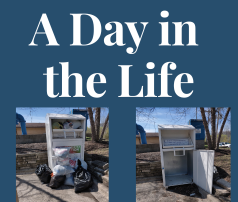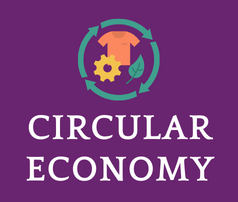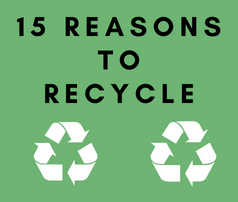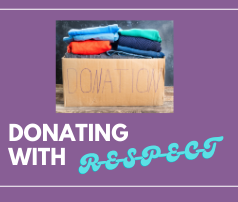 Recycling
Recycling

“One garbage truck of textiles is landfilled or incinerated every single second around the world.” (quoted by Elizabeth Cline in “The Conscious Closet”, p32, originally from a publication by the Ellen MacArthur Foundation)
Many of you, our readers, have asked “Can I donate this?” when referring to items that are torn or stained or in condition less pristine than “gently used.” The answer is yes. Always donate items if you are unsure. Unless it is wet or smelly, please donate it. If it is wet, dry it and then donate it. If it is smelly, wash it and then donate it. As quoted above, trashing textiles continues to be a huge problem in our world, one with huge effects on our ecosystems.
To shine a little more light on this topic, Elizabeth Cline’s book “The Conscious Closet” addresses some of the very questions you have asked and highlights some tips for Used Clothing Etiquette.
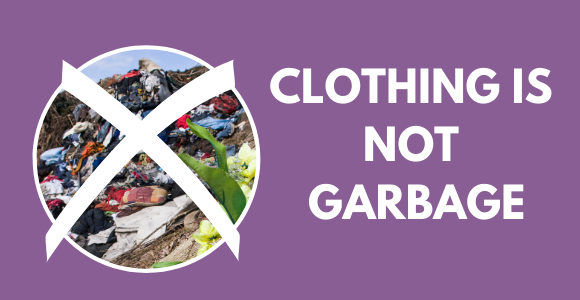
Clothing is Not Garbage
“Many of us make an honest effort to donate our gently used clothes, but we’re confused about what to do with the pieces that are worn out or broken. Isn’t it disrespectful to donate these items?” (Cline, p32)
The answer is no. Here at Chicago Textile Recycling, and most resale stores, we want all of your used textiles. As noted above, unless it is smelly or wet, please donate. There are employees highly trained at resale stores and grading facilities that sort each piece, and those that are not resaleable can still be used. Some of the uses for worn out, stained and torn clothing can be fiber content for car seat filling or insulation or wiping rags for businesses such as automotive companies and restaurants, for example. Few donated textiles are truly at their end of life, but it is always best to allow the experts to decide. So please donate textiles, no matter the condition.
“The vast majority of clothes are thrown out before their useful life is over, which amounts to lost value, resources and landfilling fees.” (Cline, p 32) Cline goes on quoting multiple sources about the millions spent in landfill fees for trashing and burning textiles, greenhouse gases emitted by clothes in landfills as well as hazardous chemicals released by some synthetics. She continues, listing the immense environmental benefits from recycling and donating clothing. With donating clothing, she highlights some tips for offering quality donations and showing respect for those to whom we donate.
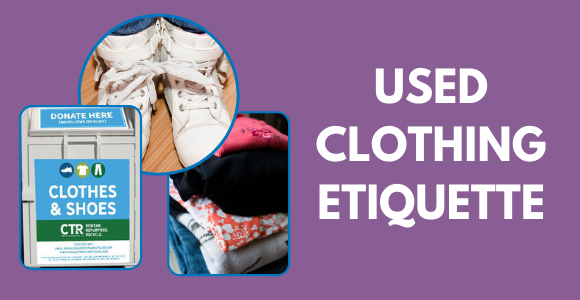
Used Clothing Etiquette
In her book “Conscious Closet”, Elizabeth Cline devotes hundreds of pages to simple steps the reader can make toward caring for our Earth through taking better care of our textiles. This can be done in a myriad of ways: caring about workers making our clothes, demanding clothes of better quality, keeping textiles out of landfills, treating textiles with respect, understanding different fibers and fabrics and more. After cleaning out our closets, she shares guidelines of etiquette we should strive to follow to make the best use of items we no longer desire to own. They include:
- Clean your clothes, no exceptions
- Remove personal belongings and detritus
- Tie your shoes together
- Mend and repair
- Never leave your donations outside unattended
Clean Your Clothes, No Exceptions
The first guideline she suggests is to clean your clothes before donating them. This follows our requirements that no donations be smelly or wet upon donation. “Set-in stains are fine if you’re recycling, but odors and unwashed dirt and grime are not.” (p 31) She continues, “Do this out of respect for the dozens of people who will handle your clothes. Dirty clothes also might end up in the dump, as it takes secondhand clothing dealers precious time to wash them.” If you are choosing to donate textiles to help care for our planet, and you are choosing to travel to a bin or resale store, choose also to make sure your donations are clean first.
Remove Personal Belongings and Detritus
The second guideline is to “Inspect your pockets and the fabric and remove all pet hair, lint, dirty tissues, coins, receipts, and the like” (p31). This is done out of respect for those you are donating to so that they do not have to take precious time in doing this. It also can be for your own sake. Shopping for purses at a thrift store, I once came upon a purse that had around ten $1 dollar bills inside. This person missed out on precious money by not checking their items before donation. Other times, I have pulled on my own coats when winter rolled back around only to find a $10 or $20 dollar bill I had forgotten was in the pocket. Remember to check through your items before adding them to donation bags.
Tie Your Shoes Together
Thirdly, Cline recommends tying your shoes together when donating. “There’s an overseas market for single shoes, but those that are paired up are much more valuable and have a greater chance of finding a new home.” (p 31) Again, these guidelines are about respecting workers in the secondhand business and doing small things that make a big difference with our donations.
Mend and Repair
“All donated clothing should be mended or repaired whenever possible to extend the item’s life and keep it out of landfills.” (p 31) At Chicago Textile Recycling and most bins and resale stores, torn textiles are accepted and wanted, but repaired or mended items have higher value and more salability. If you have the time and want to offer higher quality donations, mended and repaired items are greatly appreciated.
Never Leave Your Donations Outside Unattended
Lastly, as we have said before, especially during this time of Covid-19, when many resale stores have reduced hours or are even closing at times for the pandemic, it is vital that you check with your donation site first to make sure they are accepting donations at that time. If they are closed or “the collection point is full, do not leave your items outdoors unattended. Clothing left outside might get rained on or become damp and then mildew. From there, it will be landfilled.” (p 31)

R-E-S-P-E-C-T and Gratitude
All of us at Chicago Textile Recycling are thankful for your donations. A big part of our gratitude is having those who donate show respect for our planet, for their textiles and for us by following many of these guidelines of etiquette and showing great care for their textiles. It is the heart of our organization to see textiles stay out of landfills and have second lives in the hands of other consumers, as wiping rags or as fiber content. If you have further questions about donations we accept, check here and then reach out for more information or to find your nearest bin or resale store.

